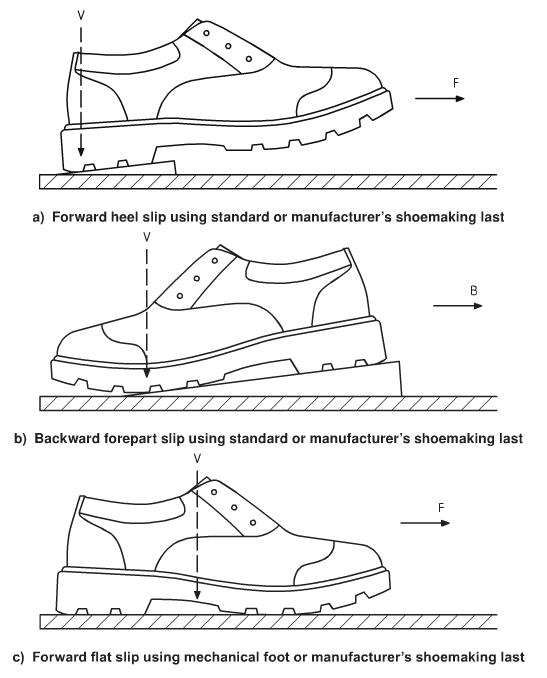
NewsInformation Center
What's the different methods used to measure slip resistance according to ASTM?
2023/11/22
According to ASTM (American Society for Testing and Materials) standards, the methods used to measure slip resistance are as follows:

1. Static Coefficient of Friction (SCOF) method: This is the most commonly used method for measuring slip resistance on dry surfaces. During the test, a sliding object exerts a vertical downward force on a horizontal surface, and the static friction coefficient is calculated by measuring the friction between the sliding object and the surface.
2. Dynamic Coefficient of Friction (DCOF) method: similar to the static friction coefficient method, but in this method, a horizontal force is exerted between the sliding object and the surface during testing, and the force of the sliding object on the surface is measured. The sliding speed and applied force are used to calculate the dynamic friction coefficient. This method is more suitable for wet surfaces or situations that are prone to slipping during use.

3. Binary Coefficient of Friction (BCOF) method: This method is mainly used to measure the slip resistance caused by lubricants. During the test, a force is applied between a dry surface and a lubricated surface, and the binary friction coefficient is calculated by measuring the friction of a sliding object between the two surfaces.
4. Brungraber Mark II Test: This test method is used to measure the slip resistance of floor surfaces made of different materials. The tester takes off his shoes and stands on the surface being tested on a slope, and the anti-slip performance is evaluated based on whether the tester can maintain balance without slipping.
These methods are commonly used to evaluate the anti-skid properties of different materials and surfaces according to ASTM standards. Specific tests should be selected according to actual needs and operated in accordance with relevant standards.
ASTM International has developed several standards for measuring slip resistance:
1. ASTM C1028-07 (Standard Test Method for Determining the Static Coefficient of Friction of Ceramic Tile and Other Like Surfaces by the Horizontal Dynamometer Pull-Meter Method): This method measures the static coefficient of friction between a test surface (such as ceramic tile) and a standardized testing device. It involves pulling a weighted sled across the surface and measuring the force required to initiate motion.
2. ASTM D2047-04 (Standard Test Method for Static Coefficient of Friction of Polish-Coated Flooring Surfaces as Measured by the James Machine): This method is specifically designed for measuring the static coefficient of friction of polish-coated flooring surfaces. It utilizes a standardized James Machine, which applies a horizontal force while measuring the frictional resistance.
3. ASTM F1679-04 (Standard Test Method for Using a Variable Incidence Tribometer - VIT): This test method measures the dynamic coefficient of friction between a test surface and a standardized tribometer. It involves moving a test foot across the surface at a controlled speed and measuring the horizontal force required.
4. ASTM F462-79 (Standard Test Method for Measuring Wet SCOF of Common Hard-Surface Floor Materials): This method determines the wet static coefficient of friction (SCOF) of hard-surface floor materials. It involves using a standardized testing device, such as a Binary Output Friction Assessment Device (BOFAD), to measure the frictional resistance when a test foot is subjected to a wetting agent.
5. ASTM E303-93 (Standard Test Method for Measuring Surface Frictional Properties Using the British Pendulum Tester): This method utilizes a British Pendulum Tester to measure the slip resistance of flooring materials. The tester swings a weighted foot across the surface, and the pendulum's motion is used to calculate the coefficient of friction.
These are just a few examples of the standards developed by ASTM International for measuring slip resistance. It's important to note that each test method has its own specific applicability and limitations. Depending on the specific material and application, different standards may be more appropriate.
Previous: What is the ASTM F2913 standard?
N e x t : What type of samples can be tested using the ASTM B117 salt spray test?



